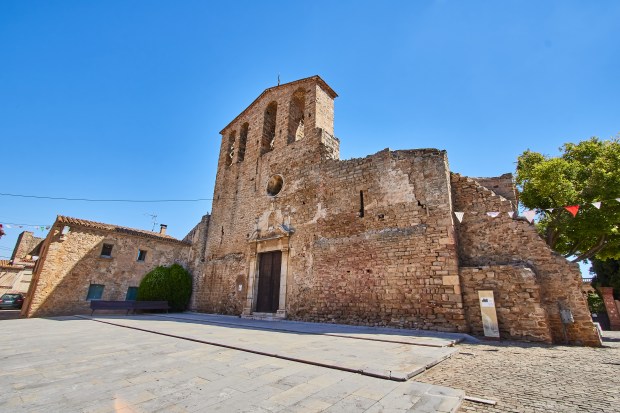There are more than 700 monasteries in Spain. Hermitages are not in short supply in the Iberian Peninsula either. These secluded dwellings were used by hermits or monastic orders to live a contemplative and solitary lifestyle. But the name also applies to buildings formerly used for secluded, monastic life, and now open to the public either as places of pilgrimage or as small hostels for pilgrims. One of the latter kinds of hermitage is that of Sant Pere d’Ullastret – St. Peter of Ullastret, in the original Catalan.
The Hermitage of Sant Pere d’Ullastret is nestled in what might be one of the most beautiful landscapes of northern Spain. Located near the charming village of Ullastret, in the province of Girona, this ancient Romanesque hermitage was built between the 9th and 10th centuries. Being a protected work as a cultural asset of local interest, the chapel is currently attached to the west side of a farmhouse.

The hermitage is popularly known by the name of Sant Pere De La Cadireta (literally, “St. Peter of the Little Chair”) because it houses an image of St. Peter seated on the Papal Chair. But the name Ullastret is a Catalan derivation of the Latin oleaster, the name given to a particular kind of olive tree that grows in the vicinities of the hermitage – indeed, ullastret is a diminutive for ullastreda, meaning “olive grove.” This variety of olive trees is typical of land close to the Mediterranean, Ullastret being some 20 minutes away, by car, from the shore.
The chapel has been part of the municipal architectural heritage since the end of 2004, the date on which the private owner of the chapel donated it to the town hall.
Throughout the year, the Hermitage of Sant Pere d’Ullastre hosts various cultural events and religious celebrations, preserving local traditions and customs. These occasions offer a glimpse into the ancient culture and warm hospitality of the village.



